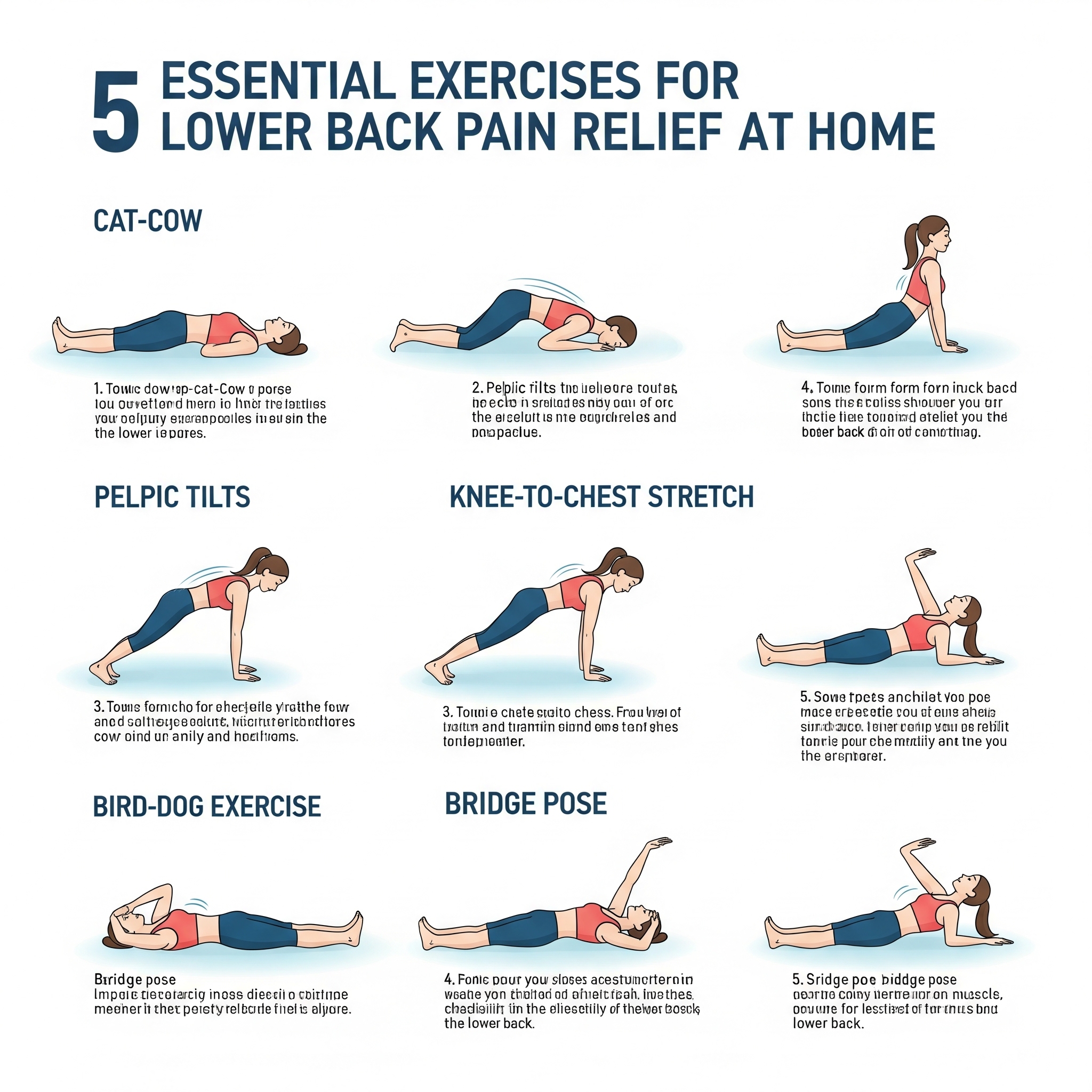5 Essential Exercises for Lower Back Pain Relief at Home

Suffering from lower back pain? You're not alone. Millions experience this common ailment, but the good news is that many cases can be significantly improved with simple, targeted exercises you can do right in your living room. Discover five gentle yet effective movements that can help strengthen your core, improve flexibility, and ease discomfort, bringing you closer to a pain-free life.
Introduction: Understanding Your Lower Back Pain
Lower back pain is a pervasive issue, affecting people of all ages and walks of life. Whether it's a dull ache, a sharp spasm, or chronic discomfort, it can severely impact your daily activities and quality of life. While severe or persistent pain always warrants a visit to a doctor or physical therapist, many common causes of lower back pain, such as muscle strain, poor posture, or lack of core strength, can be alleviated with consistent, gentle exercise.
The key to relief often lies in strengthening the muscles that support your spine and improving the flexibility of your back and hips. The good news is you don't need fancy equipment or a gym membership to start feeling better. Here are five essential exercises that are safe, effective, and easy to perform in the comfort of your own home.
The 5 Essential Exercises for Lower Back Pain Relief
1. Knee-to-Chest Stretch
This simple stretch helps to lengthen your lower back and gluteal muscles, releasing tension and improving flexibility.
- How to do it: Lie on your back with your knees bent and feet flat on the floor. Gently bring one knee towards your chest, grasping it with both hands. Hold for 20-30 seconds, breathing deeply. Release and repeat with the other leg. You can also try bringing both knees to your chest if comfortable.
- Benefits: Stretches the lower back, glutes, and hamstrings, reducing stiffness and promoting relaxation.
2. Pelvic Tilts
Pelvic tilts are excellent for mobilizing the lower spine and strengthening the abdominal muscles, which support your back.
- How to do it: Lie on your back with your knees bent and feet flat on the floor, about hip-width apart. Flatten your lower back against the floor by tightening your abdominal muscles and gently tilting your pelvis upwards (imagine pulling your belly button towards your spine). Hold for 5-10 seconds, then release. Repeat 8-12 times.
- Benefits: Strengthens core muscles, improves spinal mobility, and reduces lower back arch.
3. Cat-Cow Stretch
Inspired by yoga, the cat-cow stretch gently mobilizes your spine, improving flexibility and relieving stiffness.
- How to do it:Start on all fours with your hands directly under your shoulders and knees under your hips. Inhale as you drop your belly towards the floor, lifting your head and tailbone (Cow pose). Exhale as you round your spine towards the ceiling, tucking your chin and tailbone (Cat pose). Flow smoothly between these two positions for 10-15 repetitions.
- Benefits: Increases spinal flexibility, stretches the back and abdominal muscles, and improves posture.
4. Bird-Dog
This exercise is fantastic for strengthening your core and improving stability without putting stress on your lower back.
- How to do it: Start on all fours, ensuring your back is flat and core engaged. Slowly extend one arm straight forward while simultaneously extending the opposite leg straight back, keeping your hips level and core stable. Hold for 5-10 seconds, then return to the starting position. Alternate sides for 8-12 repetitions on each side.
- Benefits: Strengthens the core, glutes, and back muscles, improving balance and stability.
5. Bridge Pose
The bridge pose strengthens the glutes, hamstrings, and lower back muscles, which are crucial for spinal support.
- How to do it: Lie on your back with your knees bent and feet flat on the floor, hip-width apart. Engage your core and glutes, then lift your hips off the floor until your body forms a straight line from your shoulders to your knees. Hold for 15-30 seconds, then slowly lower back down. Repeat 8-12 times.
- Benefits: Strengthens glutes, hamstrings, and lower back, improving posture and reducing pain.
Important Considerations Before You Start
- Listen to Your Body: Never push through pain. If an exercise causes discomfort, stop immediately.
- Consistency is Key: Aim to perform these exercises daily or at least 3-5 times a week for best results.
- Proper Form: Focus on slow, controlled movements. Poor form can exacerbate pain.
- Consult a Professional: If your pain is severe, persistent, or accompanied by numbness or weakness, consult a doctor or physical therapist before starting any new exercise routine. They can provide a proper diagnosis and tailored guidance.
Conclusion: Take Control of Your Back Health
Incorporating these five simple exercises into your daily routine can make a significant difference in managing and preventing lower back pain. By strengthening your supporting muscles and improving your flexibility, you're taking an active step towards a healthier, more comfortable back. Start today, be consistent, and enjoy the relief!